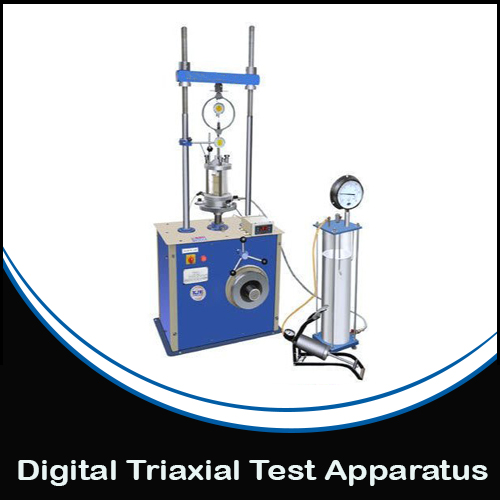
Digital Triaxial Shear
Description
Standard : IS 2720 (PART-V)
Model No. : PIT-
The Digital Triaxial Shear Apparatus is a laboratory device used primarily in geotechnical engineering and soil mechanics to simulate and analyze the mechanical behavior of soil or other materials under stress. It is a part of the testing equipment used to conduct triaxial tests, which help determine the strength, stress-strain characteristics, and deformation properties of soil under different loading conditions. It carries a screw adapter for standard Proving rings and Load Cells.
What is Triaxial Shear Test Click Here to Know.
- Two pillar type
- Detachable Frame
- Enclosed motor and gear system
- Jewel lamps indicating direction of motion
- Operational ease
- Useful for Triaxial
- Computerized interface and data transfer
- Computerized report generation
The Load Frame of Digital Triaxial Shear is consists of a cabinet which houses the gear system and motor with sturdy angle iron frame. the loading is done through the bottom loading platen, which is carried on a lead screw, which advances upwards. the top load bracket, which slides over two upright pillars, can be positioned at any desired height and locked. It carries a screw adapter for standard Proving rings and Load Cells. The loading part of the unit is detachable from the main unit for ease of transport and to avoid damage to the tension rods.
- Sample Chamber: The apparatus has a cylindrical chamber where the soil sample is placed. The soil is typically encased in a rubber membrane to prevent water leakage and to apply confining pressure uniformly around the sample.
- Confining Pressure: The sample is subjected to a cell pressure, or confining pressure, applied from all directions. This simulates the pressure experienced by soil in the ground due to overlying material (overburden pressure).
Rubber Membranes
Load Cell
Porus Stone
38x76mm Mould




